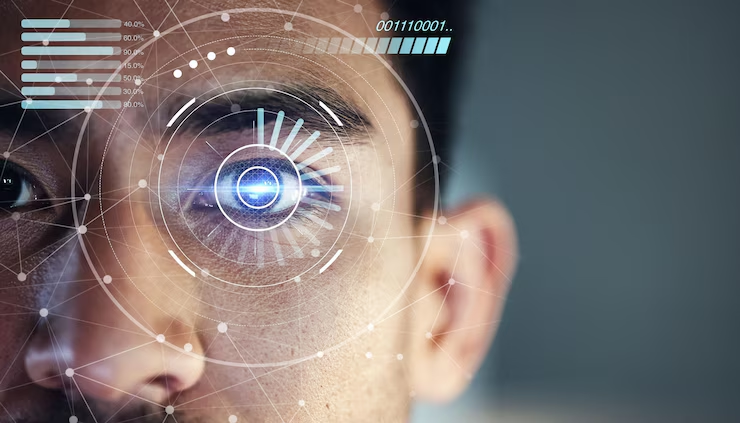Exploring the Impact of the Facial Action Coding System in 2025
- thelightbulbai
- Sep 21, 2024
- 4 min read
As technology advances, our understanding and interpretation of human emotions are becoming increasingly sophisticated. One key tool driving this evolution is the Facial Action Coding System (FACS). Developed by Paul Ekman and Wallace V. Friesen, FACS is a method for analyzing facial expressions by breaking them down into specific facial movements known as Action Units (AUs). As we approach 2025, the impact of FACS on various fields is set to be profound. In this blog, we’ll explore how the Facial Action Coding System is expected to shape the future and its implications for different industries.
What is the Facial Action Coding System?
The Facial Action Coding System (FACS) is a comprehensive framework used to categorize and analyze facial expressions based on the movement of facial muscles. It identifies 44 Action Units, each corresponding to a specific muscle movement. By examining these AUs, researchers and AI systems can decode a wide range of emotions, from joy and surprise to anger and sadness.
The Impact of FACS in 2025
1. Advancements in Emotion Recognition Technology
In 2025, FACS is poised to significantly enhance emotion recognition technology. Traditional emotion recognition systems often rely on basic facial expression categories, which can be limited in accuracy. With FACS, AI systems will be able to analyze subtle facial movements with greater precision, leading to more accurate emotion detection.
For example, customer service chatbots and virtual assistants equipped with FACS technology will be able to interpret nuanced emotional cues during video interactions. This will enable these systems to provide more empathetic responses, improving user satisfaction and engagement.
TheLightBulb.ai Provides The Best Ai based Facial action Coding Tools For Businesses.
2. Improved Mental Health Diagnostics and Support
FACS is expected to play a crucial role in advancing mental health diagnostics and support. AI systems using FACS can monitor and analyze facial expressions to detect signs of mental health issues such as depression, anxiety, and stress. This technology will enable more proactive and personalized mental health care.
For instance, a mental health app equipped with FACS could analyze users’ facial expressions during video calls to assess their emotional well-being. This data can be used to offer tailored recommendations or alert mental health professionals if intervention is needed, enhancing the overall quality of care.
3. Enhanced User Experience in Gaming and Entertainment
The gaming and entertainment industries are likely to see significant improvements thanks to FACS technology. By integrating FACS into video games and interactive media, developers can create characters and environments that respond dynamically to players’ emotional states.
Imagine a video game where non-playable characters (NPCs) use FACS to react to players’ emotions in real-time. This could lead to more immersive and engaging experiences, as characters would adapt their behavior and interactions based on players’ facial expressions, making the gameplay feel more lifelike and interactive.
4. Revolutionizing Market Research and Consumer Insights
FACS will also transform market research and consumer insights. By analyzing facial expressions in response to advertisements, product designs, and brand interactions, companies can gain deeper insights into consumer reactions and preferences.
For example, a company launching a new product could use FACS to assess participants’ facial expressions during focus groups or product trials. This information will help identify which aspects of the product resonate with consumers and which areas may require improvement, leading to more effective marketing strategies and product development.
5. Advancing Human-Computer Interaction
The integration of FACS in human-computer interaction will enhance the way we interact with technology. AI systems equipped with FACS will be able to understand and respond to users’ emotions more effectively, making interactions with digital interfaces feel more natural and intuitive.
For example, a smart home assistant with FACS capabilities could adjust its responses based on the user’s emotional state. If it detects that a user is stressed, it might offer calming suggestions or adjust the home environment to promote relaxation. This level of emotional understanding will create a more personalized and supportive user experience.
Challenges and Considerations
While the advancements in FACS technology are exciting, there are also challenges to consider. Privacy and ethical concerns will need to be addressed, especially when it comes to collecting and analyzing facial data. Ensuring that this technology is used responsibly and with respect for individuals’ privacy will be crucial in building trust and maintaining ethical standards.
Additionally, while FACS provides valuable insights, it is not a substitute for human judgment and understanding. The interpretation of emotional data still requires a nuanced understanding of context and individual differences, which technology alone may not fully capture.
Conclusion
As we look towards 2025, the Facial Action Coding System (FACS) is set to have a transformative impact on various fields. From enhancing emotion recognition technology and improving mental health diagnostics to revolutionizing user experiences in gaming and entertainment, FACS will play a pivotal role in shaping the future of emotional AI. By embracing these advancements and addressing the associated challenges, we can harness the full potential of FACS to create more empathetic, responsive, and engaging technologies.
Read More Related Blogs



Comments